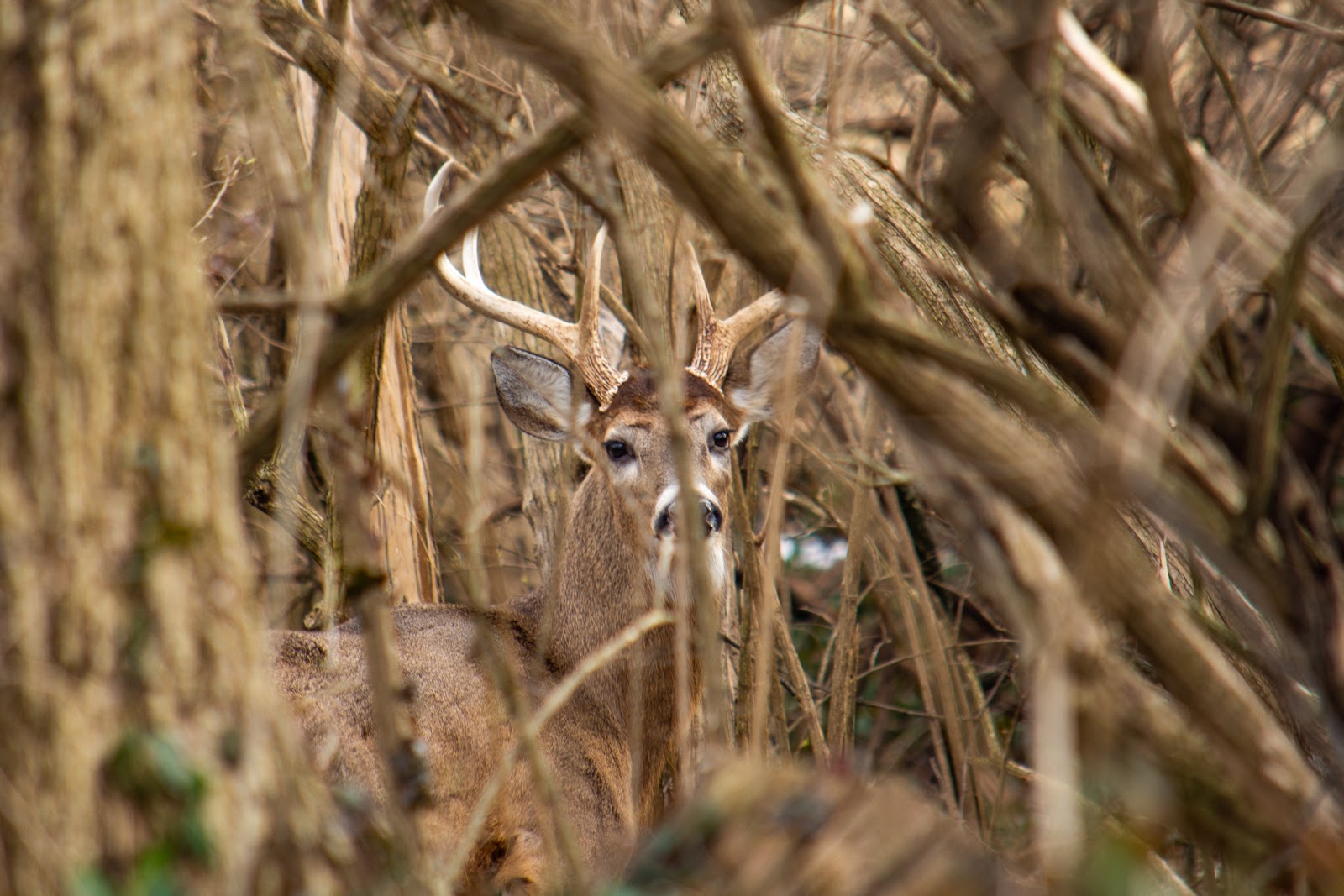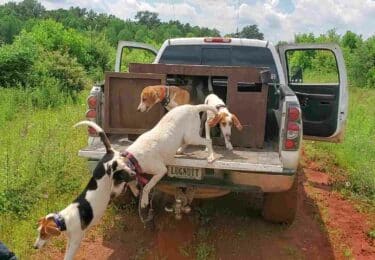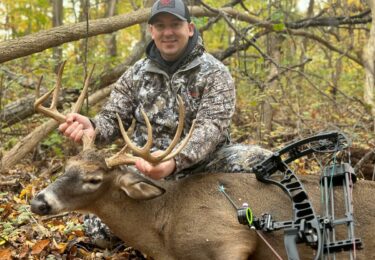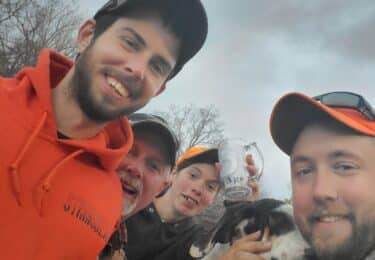Cover
This topic is somewhat of an oxymoron. We are talking about deer movement but one of the topics is cover, where deer will bed down for most of the day and movement is somewhat limited. Well this is actually how you will want to think of it. Security Cover, cover that allows deer to move during daylight hours and feel safe whether it’s from hunters or other predators.
Cover is often times over thought. When you hear cover you automatically think of the thickest nastiest places you’ve encountered while hunting and while this is very true it is cover it doesn’t necessarily mean it holds whitetails. When you are out driving through your suburbs or areas that have very little pressure on deer, you’ll see them literally bed or feed in lawns or areas in the wide open with hardly any cover, an edge of woods may be all the cover the deer need to feel secure.
When trying to locate deer cover you need to keep in the back of your mind how much pressure are these deer getting from hunters as well as natural predators.
Example 1:
I live close to a major city and I primarily hunt public hunting land within a 30 minute drive of that city. You will want to look for some of the nastiest thickest cover you can find on that piece of public land and hunt as close to it as possible as most deer movement will be at night or the last hour of light.
Example 2:
I live in a very rural area with a population of roughly 20 people and most of the human traffic occurs on the weekends when people are using public land for recreation. Well in this area you can look for protection areas that may not be super nasty close to food sources. Like a fence row, patch of tall warm season grasses things of this nature will most certainly hold deer.
Water
Water is another tricky subject. All living things need water to survive, from bacteria to whales. However herbivores absorb a lot of water through their large intestines. So needing water is something that I look at as being conditional but can be super effective.
Let’s say you live in the southern region of the United States and you haven’t had rain for three months. Locating watering sources and scouting travel patterns to and from watering sources to cover can be very productive.
The opposite is true if you live in an area that gets a high amount of rain. Hunting watering sources will be very unproductive if there’s standing water every 50 feet.
Now onto everyone’s favorite topic Reproduction. The pre-rut, rut and post rut can be a magical time to be in the woods. However and can be the most frustrating. This time of year is typically when deer movement is at an all time high especially for bucks.
Keep an eye out next week for the next blog as I break down the Pre-Rut, Rut and Post Rut.
If you missed any of the previous articles here is the place to start https://cervicide.com/be-more-successful-deer-hunting-with-these-5-steps/
To see more of what Toren has going on you can follow him on his IG @the_wild_rambler
To get all the happenings at Cervicide follow us on YT @Deerslayer TV and IG @Cervicide





